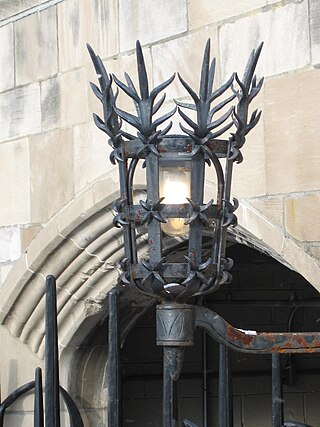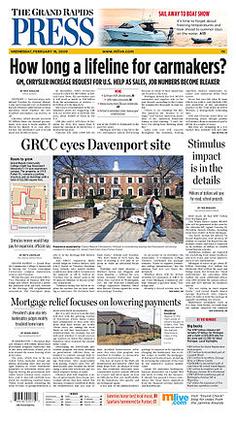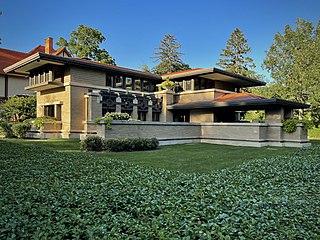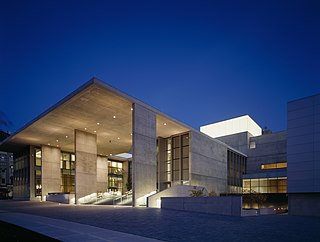
Ottawa County is a county located in the U.S. state of Michigan. As of the United States 2020 Census, the population was 296,200. The county seat is Grand Haven. The county is named for the Ottawa Nation, was set off in 1831 and organized in 1837. Ottawa County is included in the Grand Rapids-Kentwood, MI Metropolitan Statistical Area and has a significant Dutch American population. Since the late 19th century, the county has strongly supportive of the Republican Party. As of 2023, the county's board of commissioners has been described as far-right by national and Michigan-based media organizations, with former official of President Donald Trump, John Gibbs, chosen by the board to serve as the county administrator.

Ada Township is a civil township of Kent County in the U.S. state of Michigan. The population was 14,388 at the 2020 census.

Muskegon, a city in the US. state of Michigan, is the county seat of Muskegon County. Situated around a harbor of Lake Michigan, Muskegon is known for fishing, sailing regattas, and pleasure boating, and as a commercial- and cruise-ship port. It is a popular vacation destination because of the expansive freshwater beaches, historic architecture, and public art collection. It is the most populous city along Lake Michigan's Eastern shore. At the 2020 United States Census, the city's population was 38,318. The southwest corner of Muskegon Township, the city is administratively autonomous.

Grand Haven is a city within the U.S. state of Michigan and the county seat of Ottawa County. Grand Haven is located on the eastern shore of Lake Michigan at the mouth of the Grand River, for which it is named. As of the 2010 census, Grand Haven had a population of 10,412. It is part of the Grand Rapids Metropolitan Area, which had a population of 1,027,703 in 2014. The city is home to the Grand Haven Memorial Airpark (3GM) and is located just north of Grand Haven Charter Township.

Samuel Yellin (1884–1940), was an American master blacksmith, and metal designer.

The Grand Rapids Press is a daily newspaper published in Grand Rapids, Michigan. It is the largest of the eight Booth newspapers. It is sold for $1.50 daily and $7.99 on Sunday.

Châteauesque is a Revivalist architectural style based on the French Renaissance architecture of the monumental châteaux of the Loire Valley from the late fifteenth century to the early seventeenth century.

The Toledo Metropolitan Area, or Greater Toledo, or Northwest Ohio is a metropolitan area centered on the American city of Toledo, Ohio. As of the 2020 census, the four-county Metropolitan Statistical Area (MSA) had a population of 646,604. It is the sixth-largest metropolitan area in the state of Ohio, behind Cincinnati–Northern Kentucky, Cleveland, Columbus, Dayton, and Akron.

The Meyer May House is a Frank Lloyd Wright-designed house in the Heritage Hill Historic District of Grand Rapids, Michigan, in the United States. It was built in 1908–09, and is located at 450 Madison Avenue SE. It is considered a fine example of Wright's Prairie School era, and "Michigan's Prairie masterpiece".

Mathias Joseph Alten was a German-American impressionist painter active in Grand Rapids, Michigan.

Lyman Emmet Kipp, Jr. was a sculptor and painter who created pieces that are composed of strong vertical and horizontal objects and were often painted in bold primary colors recalling arrangements by De Stijl Constructivists. Kipp is an important figure in the development of the Primary Structure style which came to prominence in the mid-1960s.

The Grand Rapids Art Museum (GRAM) is an art museum located in Grand Rapids, Michigan, United States, with collections ranging from Renaissance to Modern Art and special collections on 19th and 20th-century European and American art. Its holdings include notable modern art works such as Richard Diebenkorn’s 1963 Ingleside. The museum has in its collection 5,000 works of art, including over 3,500 prints, drawings and photographs.

Grand Rapids is a city and county seat of Kent County in the U.S. state of Michigan. At the 2020 census, the city had a population of 198,893 which ranks it as the second most-populated city in the state after Detroit. Grand Rapids is the central city of the Grand Rapids metropolitan area, which has a population of 1,087,592 and a combined statistical area population of 1,383,918.

The Dougherty Mission House is a house located at 18459 Mission Road in Peninsula Township, Michigan. It was designated a Michigan State Historic Site in 1956 and listed on the National Register of Historic Places in 2011. The house was certainly one of the first frame buildings constructed in Grand Traverse County, and is thought to be the first post and beam house constructed in Michigan's lower peninsula north of Grand Rapids.
Reynold Henry Weidenaar (1915-1985) was an artist from Grand Rapids, Michigan, recognized nationally as well as locally for his technical virtuosity as a draftsman and printmaker. He embraced the subject matter and realism of American Regionalist art, though his depictions of the American Scene reflect a uniquely personal, often satirical perspective. Weidenaar is especially known for his mezzotint prints, particularly those of architectural subjects, such as the construction of the Mackinac Bridge.

Mavis Iona Pusey was a Jamaican-born American abstract artist. She was a printmaker and painter who was well known for her hard-edge, nonrepresentational images. Pusey drew inspirations from urban construction. She was a leading abstractionist and made works inspired by the constantly changing landscape.

Paddock Place, also known as the Augustus Paddock House is located at 1033 Lake Drive SE in Grand Rapids, Michigan. It was built as a single-family home and later converted into a banquet and event facility. It was listed on the National Register of Historic Places in 1985.

The Mathias J. Alten House and Studio is a single-family home located at 1593 East Fulton Street in Grand Rapids, Michigan. It was owned and lived in by Mathias Alten, a German-American impressionist painter, from 1914 until his death in 1938. The house was listed on the National Register of Historic Places in 2009.

















